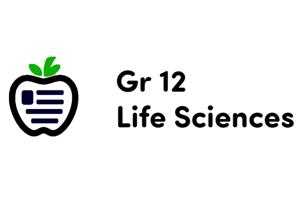Podcast
Questions and Answers
What is the primary role of Abscisic Acid (ABA) in plant stress responses?
What is the primary role of Abscisic Acid (ABA) in plant stress responses?
- Induces programmed cell death for better oxygen supply
- Regulates stomatal closure to reduce water loss (correct)
- Activates defense-related genes against pathogens
- Promotes growth during environmental stress
Which hormone accumulates in plants under flooding conditions to aid oxygen supply?
Which hormone accumulates in plants under flooding conditions to aid oxygen supply?
- Ethylene (correct)
- Jasmonic Acid (JA)
- Salicylic Acid (SA)
- Auxins
How do secondary messengers function in stress signal transduction?
How do secondary messengers function in stress signal transduction?
- They directly activate plant hormones
- They inhibit the expression of stress-related genes
- They amplify the stress signal for a stronger response (correct)
- They block the perception of stress signals
Which role do protein kinases primarily serve in the signal transduction pathways during stress?
Which role do protein kinases primarily serve in the signal transduction pathways during stress?
In addition to their growth functions, how do Auxins and Cytokinins contribute to stress responses?
In addition to their growth functions, how do Auxins and Cytokinins contribute to stress responses?
Which secondary messenger is NOT directly mentioned as a part of stress signaling?
Which secondary messenger is NOT directly mentioned as a part of stress signaling?
What is a primary function of Salicylic Acid (SA) in plants during stress conditions?
What is a primary function of Salicylic Acid (SA) in plants during stress conditions?
What is the first step in the signal transduction pathway of stress responses?
What is the first step in the signal transduction pathway of stress responses?
Flashcards
What is Abscisic Acid (ABA)?
What is Abscisic Acid (ABA)?
A plant hormone that plays a central role in drought and salinity stress responses, acting as a signal to regulate stomatal closure and enhance stress tolerance.
What does Ethylene do in response to flooding?
What does Ethylene do in response to flooding?
A plant hormone that accumulates under flooding conditions, inducing adaptations like programmed cell death in root cells to create air spaces and improve oxygen supply.
What is the role of Jasmonic Acid (JA)?
What is the role of Jasmonic Acid (JA)?
A plant hormone crucial for defending against herbivores and pathogens, also aiding in antioxidant defenses during drought or temperature stress.
What is Salicylic Acid (SA) involved in?
What is Salicylic Acid (SA) involved in?
Signup and view all the flashcards
What is the role of Auxins, Gibberellins, and Cytokinins in stress?
What is the role of Auxins, Gibberellins, and Cytokinins in stress?
Signup and view all the flashcards
What is Signal Transduction?
What is Signal Transduction?
Signup and view all the flashcards
What is the role of receptors in signal transduction?
What is the role of receptors in signal transduction?
Signup and view all the flashcards
What is the role of secondary messengers in signal transduction?
What is the role of secondary messengers in signal transduction?
Signup and view all the flashcards
Study Notes
Molecular Mechanisms in Stress Responses
- Plant hormones (phytohormones) modulate stress responses, acting as signals for defense mechanisms.
- Abscisic Acid (ABA): A "stress hormone" crucial for drought and salinity stress by regulating stomatal closure to reduce water loss. It also modifies gene expression for stress tolerance.
- Ethylene: Accumulates under abiotic stress like flooding, inducing programmed cell death in certain root cells to form air spaces, improving oxygen supply.
- Jasmonic Acid (JA): Essential for defense against herbivores and pathogens; it can also activate antioxidant defenses during drought or temperature stress.
- Salicylic Acid (SA): Mediates plant responses to pathogens and plays a role in abiotic stress like temperature fluctuations, by activating defense-related genes.
- Auxins, Gibberellins, and Cytokinins: Primarily associated with growth but also modulate responses to environmental stress, like cytokinins delaying leaf senescence for greater tolerance.
Signal Transduction Pathways
- Signal transduction pathways translate external stress signals into cellular responses.
- Perception of Stress Signals: Receptors on the plasma membrane recognize environmental changes like drought, salinity, or pathogen invasion.
- Secondary Messengers: Calcium ions (Ca2+), reactive oxygen species (ROS), and cyclic AMP (cAMP) amplify stress signals, initiating a more robust response.
- Activation of Protein Kinases and Phosphatases: Protein kinases (e.g., MAPKs) phosphorylate target proteins, relaying the signal, balanced by phosphatases to ensure response specificity.
- Transcriptional Regulation: Signal cascade activates transcription factors that regulate stress-responsive genes. This leads to the expression of stress proteins, antioxidants, osmoprotectants, and enzymes to combat stress.
- Crosstalk Between Pathways: Pathways often interact creating a network allowing plants to prioritize responses based on the stress condition, ensuring efficient response to combined stress.
Studying That Suits You
Use AI to generate personalized quizzes and flashcards to suit your learning preferences.




